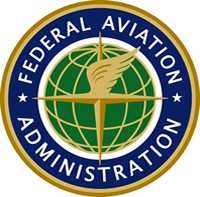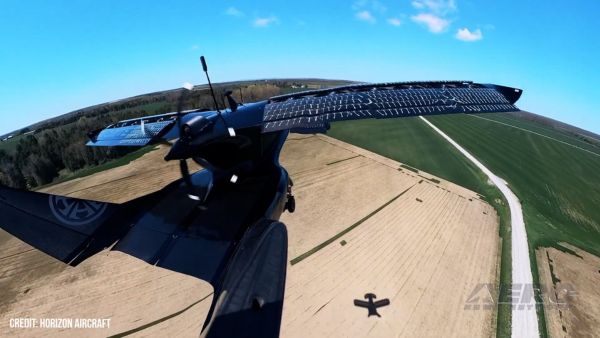Thu, Jun 11, 2009
SAFO Calls For A Constant Angle Of Descent For Night IFR
 The FAA has issued a Safety Alert
For Operators (SAFO) for Parts 121 and 135 Operators using Constant
Angle of Descents techniques for nonprecision approaches. The
alert was written after an operator conducting a nonprecision
approach at night in instrument meteorological conditions (IMC)
conditions failed to control their descent rate while conducting
the approach procedure resulting in the airplane crashing short of
the runway.
The FAA has issued a Safety Alert
For Operators (SAFO) for Parts 121 and 135 Operators using Constant
Angle of Descents techniques for nonprecision approaches. The
alert was written after an operator conducting a nonprecision
approach at night in instrument meteorological conditions (IMC)
conditions failed to control their descent rate while conducting
the approach procedure resulting in the airplane crashing short of
the runway.
According to the official FAA document:
"During a nonprecision approach procedure, the descent from the
final approach altitude to the minimum descent altitude (MDA)
requires disciplined piloting technique and increased situational
awareness to accommodate the pilot workload during this segment of
the approach. As the complexity of the approach procedure
increases, such as multiple step-down fixes or a circling approach,
the pilot’s workload increases. Environmental concerns such
as night operations and weather conditions at minimums provide a
cumulative affect on pilot workload. The workload under the
aforementioned conditions increases significantly for part 135
single pilot operations. Therefore, operators should evaluate and,
if necessary, implement appropriate procedures to reduce workload
issues applicable to nonprecision approaches.
 Such procedures should include the
use of vertical navigation (VNAV) (if equipped) during nonprecision
approaches, as a means to achieve a constant angle of descent
approach profile from the final approach fix (FAF) to MDA. If the
airplane is not VNAV equipped, the operator should develop
procedures that address approach profile techniques using a
stabilized constant angle of descent from the FAF to arrive at the
published MDA prior to the published visual descent point (VDP). If
the approach does not have a published VDP, the flightcrew may
determine a point along the course between the FAF and missed
approach point that would be appropriate for a VDP. With the runway
environment in sight, and at the published VDP or established on
glidepath by means of a visual landing aid or vertical guidance
(VNAV equipped), the flightcrew may begin a normal descent from MDA
to the landing runway.
Such procedures should include the
use of vertical navigation (VNAV) (if equipped) during nonprecision
approaches, as a means to achieve a constant angle of descent
approach profile from the final approach fix (FAF) to MDA. If the
airplane is not VNAV equipped, the operator should develop
procedures that address approach profile techniques using a
stabilized constant angle of descent from the FAF to arrive at the
published MDA prior to the published visual descent point (VDP). If
the approach does not have a published VDP, the flightcrew may
determine a point along the course between the FAF and missed
approach point that would be appropriate for a VDP. With the runway
environment in sight, and at the published VDP or established on
glidepath by means of a visual landing aid or vertical guidance
(VNAV equipped), the flightcrew may begin a normal descent from MDA
to the landing runway.
Operators should place a strong emphasis in their procedures
relative to altitude management throughout the approach procedure.
Particular attention should focus on methods and procedures
established for use by the flight crew to manage their descent and
maintain published altitudes along with appropriate descents from
altitudes to either the next altitude or the landing runway, as
appropriate."
The FAA recommends that Part 121 Directors of Safety and
Directors of Operations, part 135 Directors of Operations, and
Training Managers should perform a thorough review of their General
Operations Manual (GOM) and training program to evaluate and, if
necessary, develop and implement procedures for the use of constant
angle descent techniques during nonprecision approach procedures.
The use of constant angle of descents techniques should be a focal
point during all flightcrew training, testing and checking.
More News
“Each Honor Flight mission is a special occasion, but the ability to be a part of EAA AirVenture always creates unforgettable moments. Honoring our local Vietnam veterans out>[...]
From 2015 (YouTube Edition): The Airframes Displayed At AUVSI 2015 Were Quite Innovative It’s common to visualize a small vertical lift UAV as having 4 to 6 propellers, it&rs>[...]
The Airplane Began A Descent While Still In A Right Turn And Impacted Terrain On March 13, 2025, about 0733 central daylight time, a Cessna 525A airplane, N525CZ, was destroyed whe>[...]
It Looks Like It's Gonna Get A Bit Tight, Klyde FMI: www.klydemorris.com>[...]
Also: Blackhawk’s Replacement, Supersonic Flight, Archer 1Q/25, Long-Range VTOL Program U.S. Secretary of Transportation Sean P. Duffy released an update on progress being ma>[...]
 Aero-News: Quote of the Day (05.25.25)
Aero-News: Quote of the Day (05.25.25) Classic Aero-TV: Efficient Versatility -- NASA GL-10 Greased Lightning
Classic Aero-TV: Efficient Versatility -- NASA GL-10 Greased Lightning NTSB Prelim: Cessna 525
NTSB Prelim: Cessna 525 Klyde Morris (05.23.25)
Klyde Morris (05.23.25) Airborne-NextGen 05.20.25: Drone Regs, Zero-Emission Cargo, Door-Dash Drone
Airborne-NextGen 05.20.25: Drone Regs, Zero-Emission Cargo, Door-Dash Drone




